For a long time I have been looking for a good Japanese paring knife. The supply of these knives is rather thin; maybe they are not used a lot in the Japanese kitchen.
Some time ago I found one I really liked and that I used a lot: the Shun Classic paring knife. However, this knife has one disadvantage: I often use it with the blade in my hand (for peeling, for example). Because the section of the blade just in front of the handle sticks out a bit and is rather sharp, this has resulted in some cuts. Therefore I was looking for a paring knife that is more gentle to the hand.
Finally I found it: a Kramer by Zwilling Euro Meiji office knife. Which I think also looks a lot better than the Shun.
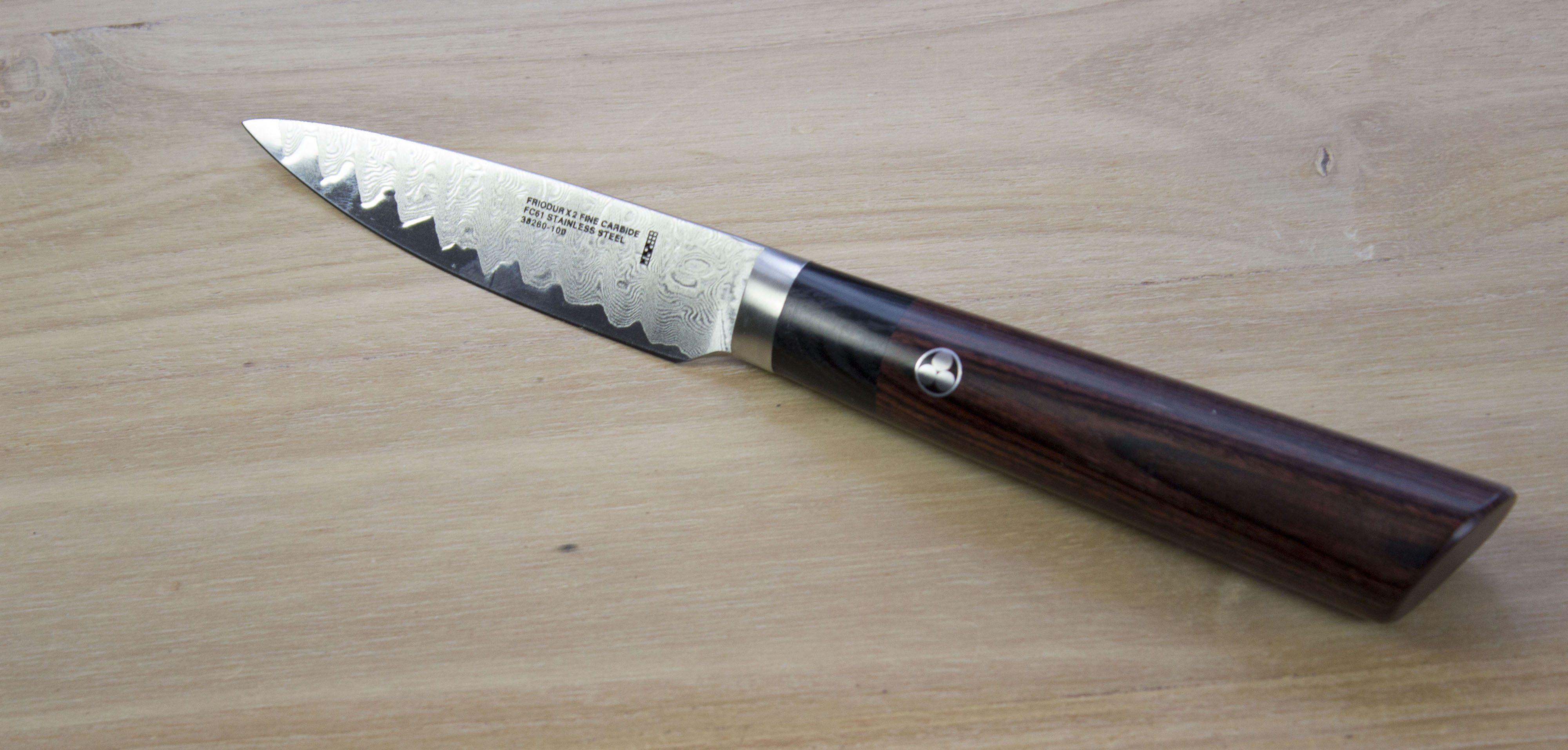
Zwilling (also called Henckels or Zwilling Henckels, mainly in the United States) apparently found out that Japanese knives are quite popular at the moment and decided to make an entire Japanese line. These knives are made in Japan and have many properties of Japanese knives, such as a relatively hard steel and a Japanese handle. But this review is about the paring knife only.
Looks and finish
As I already wrote, I like the looks of this knife a lot. I am not a fan of most Damascus blades, but I do like the Damascus on this blade.
I'd read that some of the knives of this series are not finished too well, but the finish of this knife is impeccable: it has a well-made small metal bolster, among others to prevent fluids from entering the wooden handle. The ferrule is made of black pakkawood and it is almost impossible to feel the transition to the remainder of the handle. The handle has an oval shape with a protrusion that makes it suitable for right-hand users only. (There are no left-hand versions available.)
And, very important to me, the section of the blade just in front of the handle hardly sticks out and does so in a very gentle way. In the few months I have used this knife I have not been able to cut myself yet.
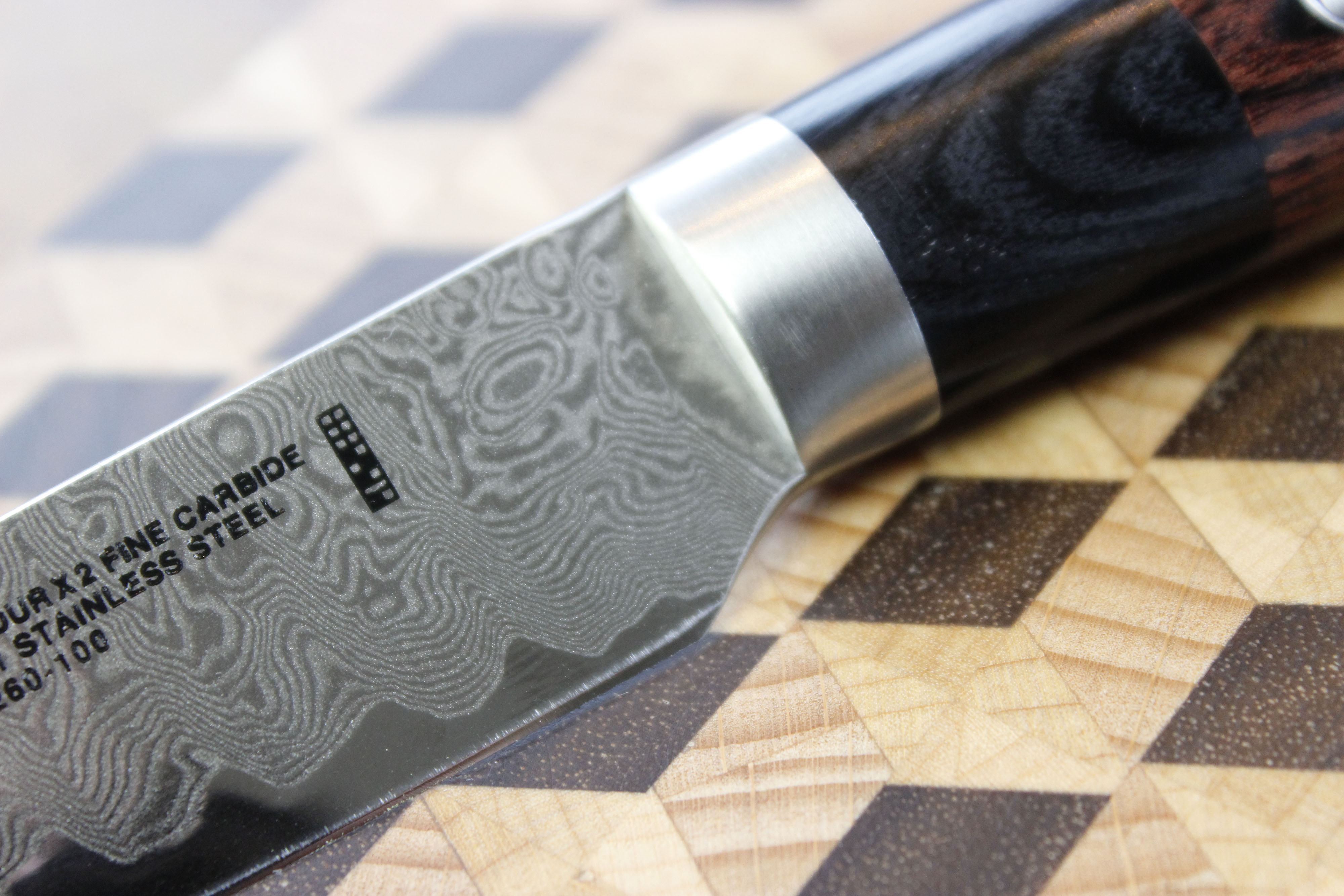
Profile and geometry
The profile of the knife is fairly standard for a paring knife, although the edge is quite rounded for such a knife. The blade is 8.7 mm long and 2.2 mm high. The knife tapers nicely from 1.7 mm at the handle to 0.6 mm at 1 cm from the tip. This thickness gives the knife the required flexibility. And its thin tip makes it suitable for the finer work.
Half a centimeter above the edge it measures 0.6 mm. This is pretty thin, prevents wedging and makes the knife suitable for tasks like peeling, paring and removing the cores of fruit and vegetables. The knife is also quite suitable for precise tasks like slicing garlic gloves.
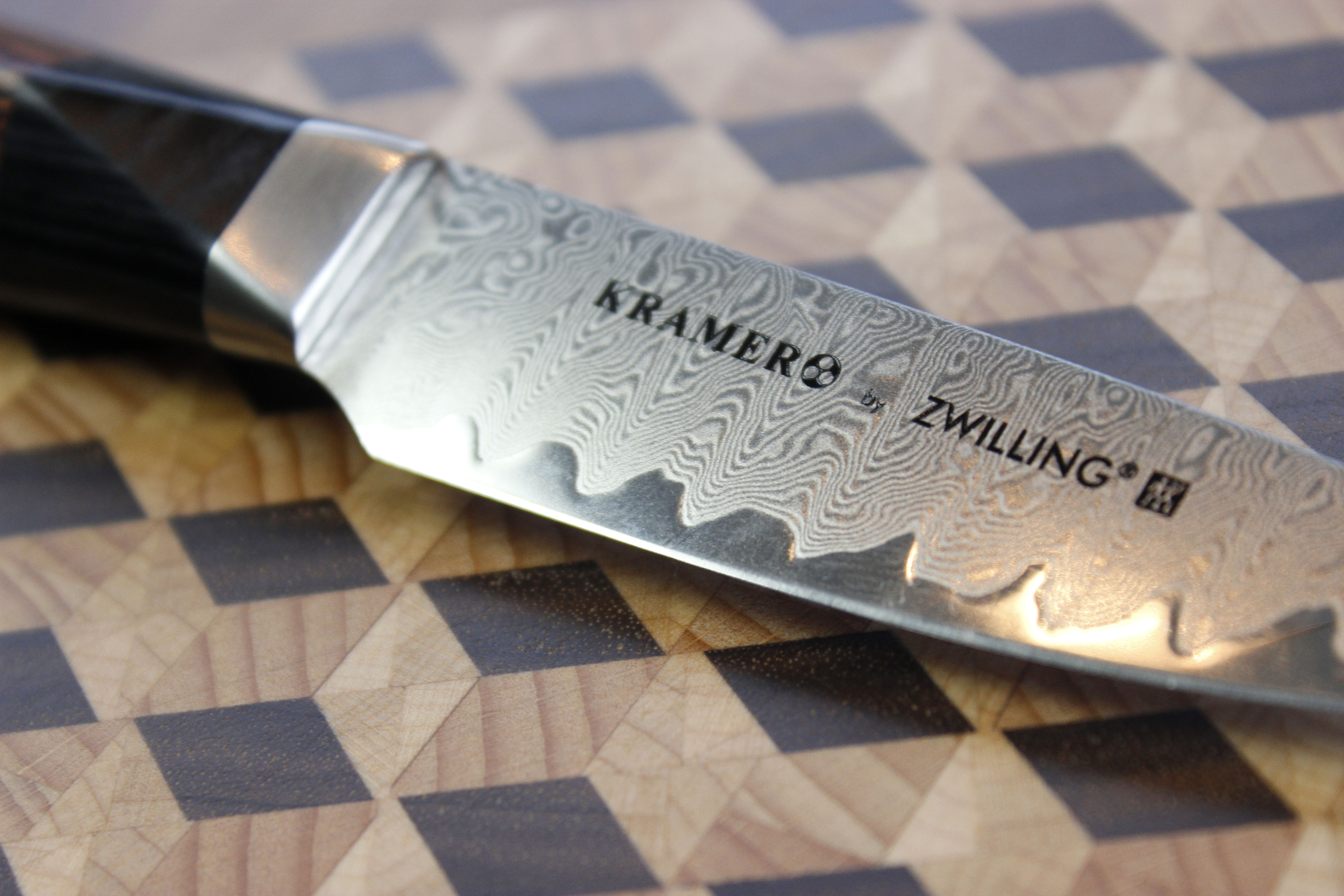
It is hard to find information about the steel (FC61, probably a name used by Zwilling only), but it appears to be stainless and in my experience it is pretty tough and wear-resistant.
Use and conclusion
This knife is a joy to use. It feels great in the hand and is basically very good at all tasks you'd use a petty for. I've cut massive amounts of garlic, baby tomatoes and other smaller vegetables with it and peeled lots of fruits and vegetables. And the knife is a great looker. As far as I am concerned Zwilling made a great move by entering this market.
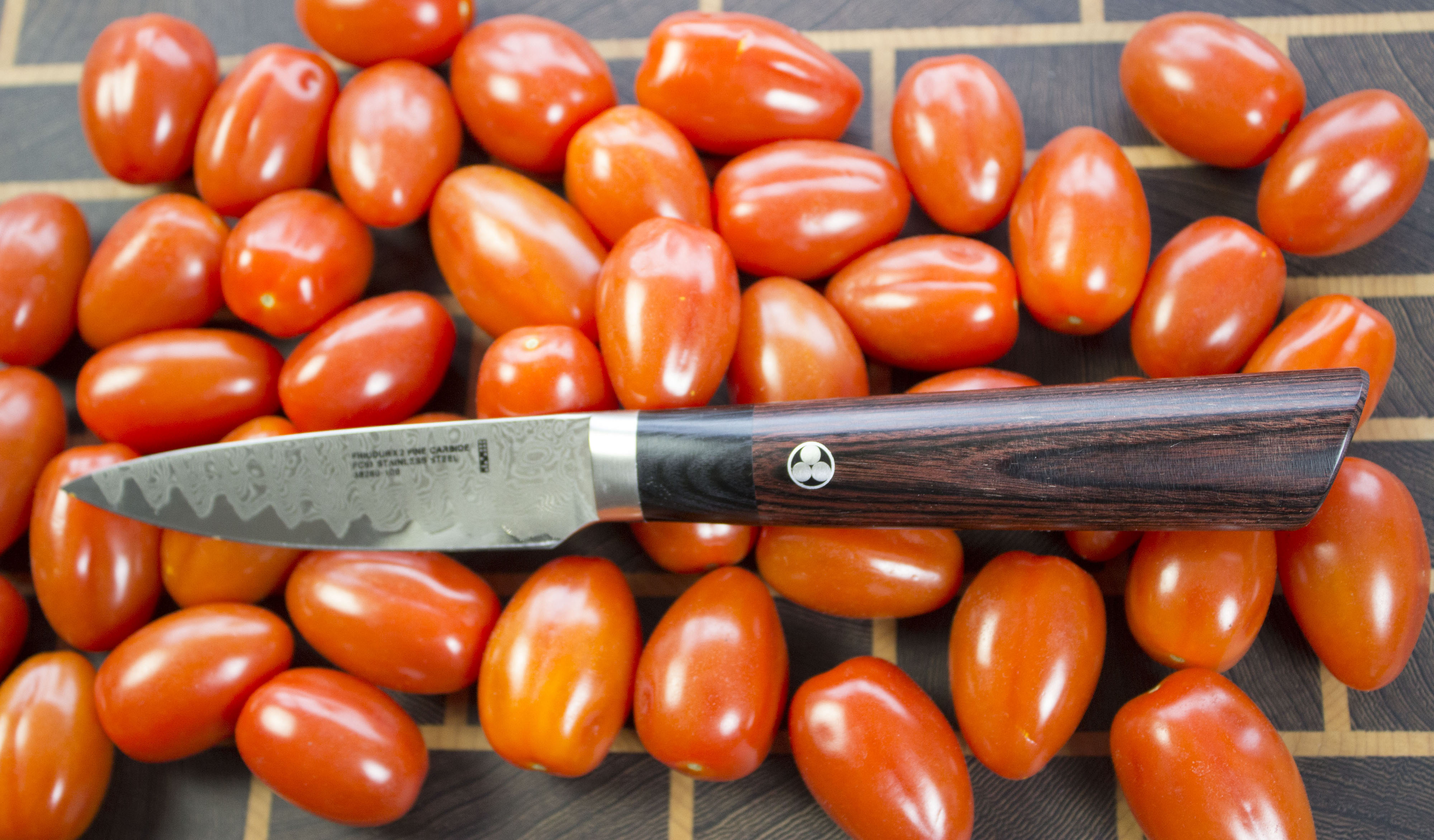
Factsheet
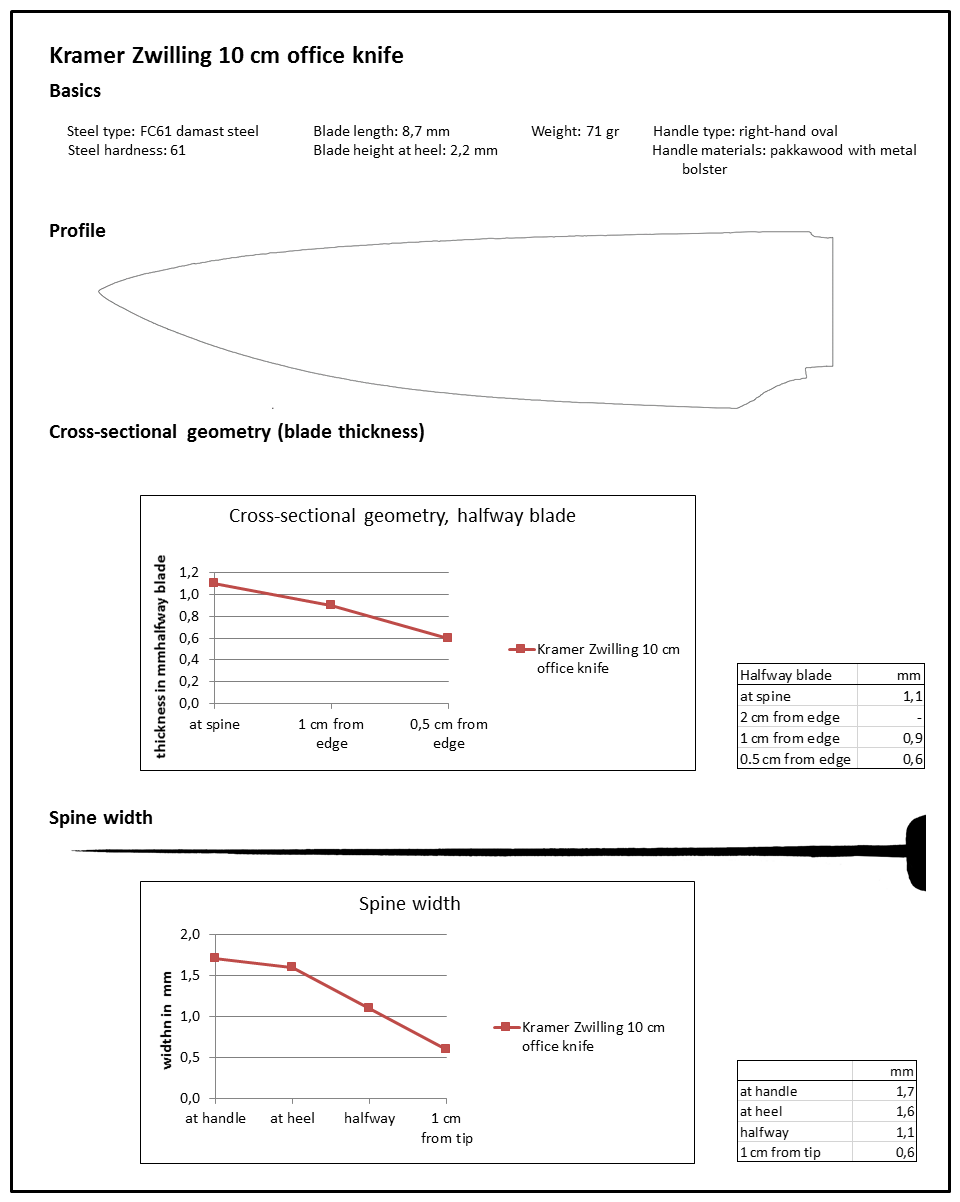
Some time ago I found one I really liked and that I used a lot: the Shun Classic paring knife. However, this knife has one disadvantage: I often use it with the blade in my hand (for peeling, for example). Because the section of the blade just in front of the handle sticks out a bit and is rather sharp, this has resulted in some cuts. Therefore I was looking for a paring knife that is more gentle to the hand.
Finally I found it: a Kramer by Zwilling Euro Meiji office knife. Which I think also looks a lot better than the Shun.

Zwilling (also called Henckels or Zwilling Henckels, mainly in the United States) apparently found out that Japanese knives are quite popular at the moment and decided to make an entire Japanese line. These knives are made in Japan and have many properties of Japanese knives, such as a relatively hard steel and a Japanese handle. But this review is about the paring knife only.
Looks and finish
As I already wrote, I like the looks of this knife a lot. I am not a fan of most Damascus blades, but I do like the Damascus on this blade.
I'd read that some of the knives of this series are not finished too well, but the finish of this knife is impeccable: it has a well-made small metal bolster, among others to prevent fluids from entering the wooden handle. The ferrule is made of black pakkawood and it is almost impossible to feel the transition to the remainder of the handle. The handle has an oval shape with a protrusion that makes it suitable for right-hand users only. (There are no left-hand versions available.)
And, very important to me, the section of the blade just in front of the handle hardly sticks out and does so in a very gentle way. In the few months I have used this knife I have not been able to cut myself yet.

Profile and geometry
The profile of the knife is fairly standard for a paring knife, although the edge is quite rounded for such a knife. The blade is 8.7 mm long and 2.2 mm high. The knife tapers nicely from 1.7 mm at the handle to 0.6 mm at 1 cm from the tip. This thickness gives the knife the required flexibility. And its thin tip makes it suitable for the finer work.
Half a centimeter above the edge it measures 0.6 mm. This is pretty thin, prevents wedging and makes the knife suitable for tasks like peeling, paring and removing the cores of fruit and vegetables. The knife is also quite suitable for precise tasks like slicing garlic gloves.

It is hard to find information about the steel (FC61, probably a name used by Zwilling only), but it appears to be stainless and in my experience it is pretty tough and wear-resistant.
Use and conclusion
This knife is a joy to use. It feels great in the hand and is basically very good at all tasks you'd use a petty for. I've cut massive amounts of garlic, baby tomatoes and other smaller vegetables with it and peeled lots of fruits and vegetables. And the knife is a great looker. As far as I am concerned Zwilling made a great move by entering this market.

Factsheet





